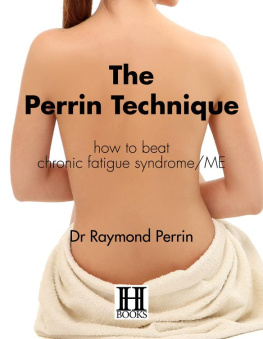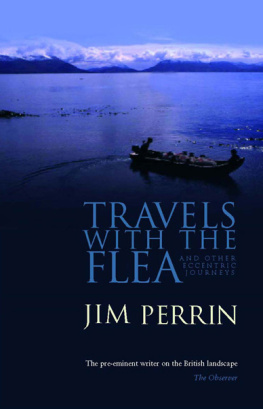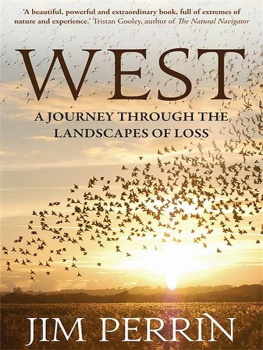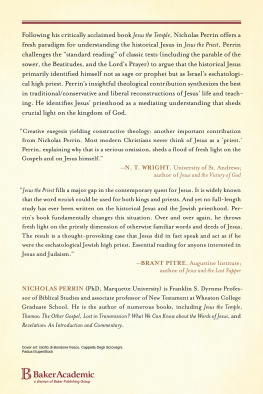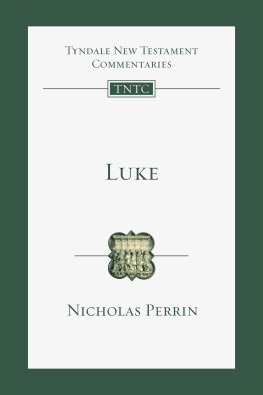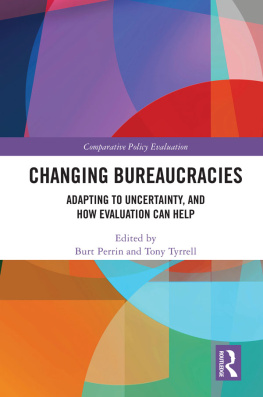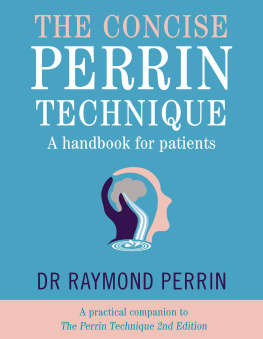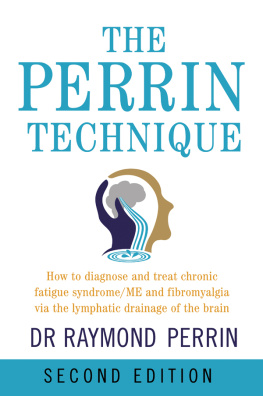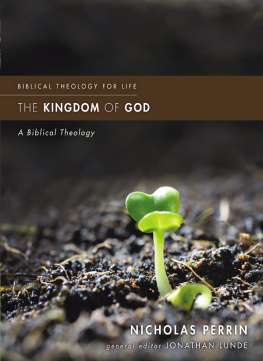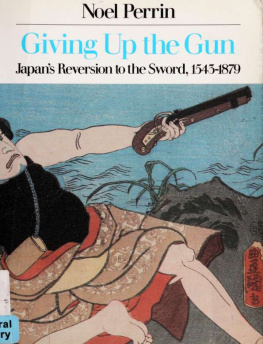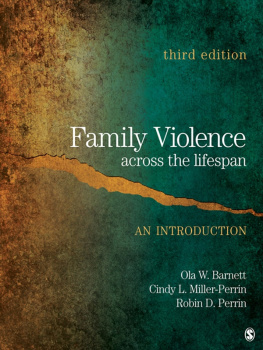First published as a print book in 2007 by Hammersmith Press Limited
First published as a digital book in 2012 by Hammersmith Health Books, an imprint of Hammersmith Books Limited
Reprinted 2007, 2008, 2009, 2011, 2012
www.hammersmithbooks.co.uk
2007, 2012 Dr Raymond Perrin
All rights reserved. No part of this publication may be reproduced, stored in any retrieval system or transmitted in any form or by any means, electronic, mechanical, photocopying, recording or otherwise, without the prior permission of the publishers and copyright holder.
Whilst the advice and information in this book are believed to be true and accurate at the date of going to press, neither the author nor the publisher can accept any legal responsibility or liability for any errors or omissions that may be made. In particular (but without limiting the generality of the preceding disclaimer) while every effort has been made to ensure that the contents of this book are accurate, it must not be treated as a substitute for qualified medical advice. Neither the author nor the publisher can be held responsible for any loss or claim arising out of the use, or misuse, of the suggestions made or the failure to take medical advice.
British Library Cataloguing in Publication Data: A CIP record of this book is available from the British Library.
ISBN 9781781610022
Commissioning editor: Georgina Bentliff
Designed by Julie Bennett
Photography by Stuart Derbyshire (treatment and exercise technique) and the author Diagrams drawn by Prof. Jim Richards and the author
Production by Helen Whitehorn, Pathmedia
Sometimes our light goes out but is blown into flame by another human being. Each of us owes deepest thanks to those who have rekindled this light.
Albert Schweitzer (18751965)
Throughout the last seventeen years, while I was writing my thesis and this book, there have been many people to whom I owe an enormous debt of gratitude in enabling me to finish my thesis, in July, 2005, and subsequently this book.
I would like to pay tribute to the benefactors, scientists, colleagues, patients, family members, staff and friends who have all played a pivotal role in my years involved with CFS/ME research, culminating in the completion of this publication.
Firstly, I would like to express my heartfelt thanks to The David and Frederick Barclay Trust for providing the funds for this research. Since the establishment of the Fund for Osteopathic Research into ME (FORME) in February 1995, there have been some exceptional members of the public who have served as trustees of FORME. I thank them all, especially vice-chair and founder Riaz Bowmer, as well as past chairmen Darren Mercer and Chris March. My special thanks go to Ruth Behrend, Kelvin Heywood, Steve Briggs and Sue Peers for their continuing funding and support.
Let me extend my thanks, too, to my first CFS/ME success, Pete, who insisted that I begin this long road of research, and my many patients over the years who have contributed advice, encouragement and research funds. I thank Dr C. Royde, a retired Manchester general practitioner, who, in the early days of my research, gave me encouragement and advice from an orthodox medical perspective and checked my earliest work. Thanks also to Dr Anne Macintyre and to Dr Andrew Wright for their invaluable information and inspiration.
Many thanks to Professor Jack Edwards, who initially took me under his wing in my early years at Salford Universitys Department of Orthopaedic Mechanics, for his patience, guidance and for his meticulous checking of my thesis. Thanks, too, to health psychologist Dr Pat Hartley, joint supervisor with Professor Edwards, for her guidance.
My main supervisor during the research, Dr Vic Pentreath, has been a source of immense support and, without his cajoling, positive advice and cheerful disposition, I might never have persevered.
Let me thank Professors Alan Jackson and Jim Richards, who have both imparted a mere fraction of their practical skills and immense knowledge in neuroradiology and biomechanics respectively, which are incalculably useful.
I am also very grateful to the following:
My colleagues Sophie King and Mark Stern, Darren Hayward, at my London and Manchester clinics for coping with years of organised chaos. My secretary Elaine Coleman for her superb clerical and organisational skills and Melissa for modelling her healthy spine. My patients-turned-models for the photographs in this book. My father Bernard Perrin, and my father-in-law Colin Fretwell, for proofreading my original thesis. My nephew, Simon Klein, for his computer skills.
Thanks go to Shirley Trickett and my publisher Georgina Bentliff who both gave me the final encouragement to finish the book, as well as my editor Anne Charlish, and all the staff at Hammersmith Press for helping to bring my work to a much wider audience.
My sons Jonathan, Max and Joshua all deserve a mention as they have had to do part of their growing up with a dad who was often engrossed in his work. Last, but never least, I must pay tribute to my wife Julie who is a true jewel. Through her own long battle with CFS/ME, Julie has empathised with my patients and patiently supported my work week by week, year by year.
My book describes a journey of discovery that started as a consequence of an event in 1989, which some would say was fate, others luck. A simple appointment for back pain led to a former cyclist changing my life forever and helping to improve the lives of countless people around the world. This book has been written as an informative guide for people who suffer from chronic fatigue (known in Great Britain as CFS/ME), while revealing the trials and tribulations of the innovative research into the disease that led to the formation of The Perrin Technique.
Many ideas have been put forward to explain the cause of and treatment of the body, I have discovered a probable mechanical cause of the disease. The details of my theory are contained within this book, interspersed with the background story of the research itself.
There was no proof in 1989 for the concept of CFS/ME having physical causes, and thus I have spent some seventeen years researching the medical facts, looking at pathological mechanisms in other conditions, and finding plenty of scientific evidence to validate the concept that mechanical problems may lead to CFS/ME. The results of this research will help you to understand the underlying cause of the disorder.
I have included a comprehensive guide to the manual treatment of CFS/ME that should prove helpful to both practitioner and patient. This fresh approach to fighting the disease will, I hope, improve the health of millions of sufferers throughout the world.
For those readers who are not familiar with all of the medical terms in the book, there is a comprehensive glossary at the end. This should enable the patient, as well as the practitioner, fully to understand my approach and to benefit from treatment for the debilitating condition of CFS/ME.

